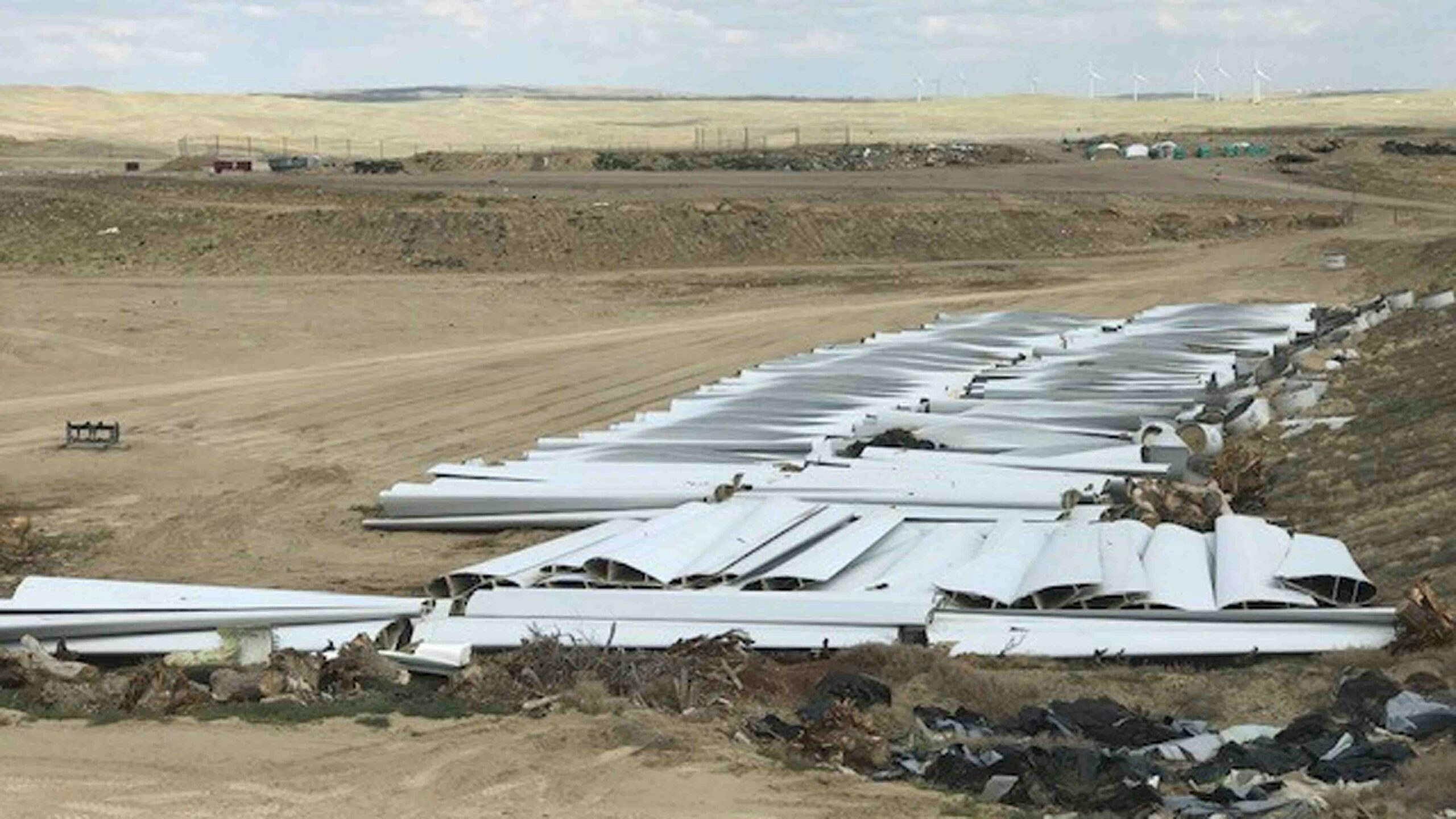A half-shredded blade hanging from a wind turbine just off Interstate 80 west of Cheyenne is a reminder that these towering electricity generators are not immune to the sometimes-violent hail and lightning storms that roll through southeastern Wyoming.
A single wind turbine tower with a destroyed blade hangs from the nacelle of one of those just a few hundred feet north of I-80.
It’s hard to miss.
It’s half the size of a 130-foot-long blade and has what looks like hundreds of hair-like strands of rope left behind when lightning blasted the fiberglass-reinforced material.
Laurie Farkas, a spokeswoman for Black Hills Energy, confirmed that the blade was damaged by a lightning strike July 17 at the Corriedale wind farm west of Cheyenne.
The wind farm is jointly owned by Black Hills Energy’s electric utilities in South Dakota and Wyoming.
“With safety as our top priority, the area around the turbine has been secured and we are working to make the necessary repairs,” Farkas said.
“Once the repairs have safely been made, the turbine will be returned to service,” she said. “We do not anticipate power reliability or supply issues for our customers related to the out-of- service turbine.
The damaged wind turbine is part of the $79 million Corriedale wind energy project that went into service in 2020 on land leased from the historic King Ranch.
The King Ranch Co. was established in 1911 on the western edge of Cheyenne and is owned by Mark Eisele, who has worked on the ranch since the 1970s.
The ranch runs herds of red and black Angus and manages a portion of the land as alfalfa and native grass hay fields.
Eisele, who also is president of the National Cattlemen’s Beef Association, has been active in fighting efforts by the military to feed lab-grown meat to troops.
“We absolutely went ballistic on that,” Eisele told a Cowboy State Daily reporter on July 29.
The Department of Defense backed away from the plan.
The wind farm is located adjacent a large Walmart distribution center, a Microsoft data center and the National Science Foundation’s Wyoming Supercomputing Center. The center represents a collaboration between the National Center for Atmospheric Research and the University of Wyoming.
Replacing Blades Not Easy
All components of the wind turbines at the 52.5-megawatt wind farm were supplied by France-based GE Vernova, including the tower assembly, nacelle and turbine blades.
Lightning damage is the single largest cause of unplanned downtime for wind turbines and the most common insurance claim filed by wind farm owners. Many turbines have lightning protection and surge protection systems used to divert an incoming electrical current into the ground, protecting rotor blades and nacelles from damage.
"There are several industry proven techniques for replacing blades,” Farkas said. “While damages are not regularly expected, the industry has been able to develop several safe and efficient practices for replacements.”
In general, a mobile crane will set up near the wind turbine and attach rigging to the blade, lower it to the ground, rig the new blade and raise it into position, Farkas explained.
Replacing a 130-to-200-foot blade weighing several tons on a wind turbine is not a simple task, especially with prevailing winds in the area.
Add in the cost of a mobile crane capable of hoisting its weight to the required height (as much as $150,000 to $200,000 per job) and the scheduling challenges of getting equipment on-site, blade replacement can become a major expense in both time and capital, according to an explanation provided by Ferndale, Washington-based Sampson Rope Technologies Inc.
The municipal landfill in Casper has become the final resting spot for hundreds of blades that have reached the end of their life expectancy after 20 or 25 years.
This landfill also could become the final burial ground for the damaged blade from Cheyenne as wind farms from around the state of Wyoming and surrounding region send their blades here.
In a statement issued to Cowboy State Daily, Cindy Langston, Casper’s Solid Waste Division manager, said the Cheyenne blade may end up going elsewhere as the city has stopped accepting blades since the pandemic.
According to one 2017 study, the global wind industry will produce 43 million tons of blade waste by 2050. The United States will account for 16% of that total amount.
Contact Pat Maio at pat@cowboystatedaily.com

Pat Maio can be reached at pat@cowboystatedaily.com.









